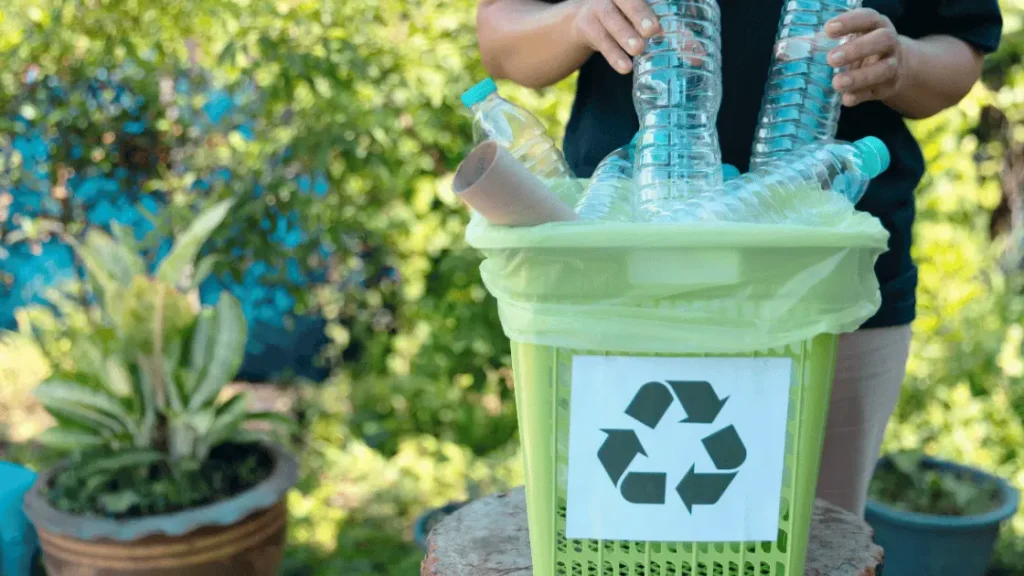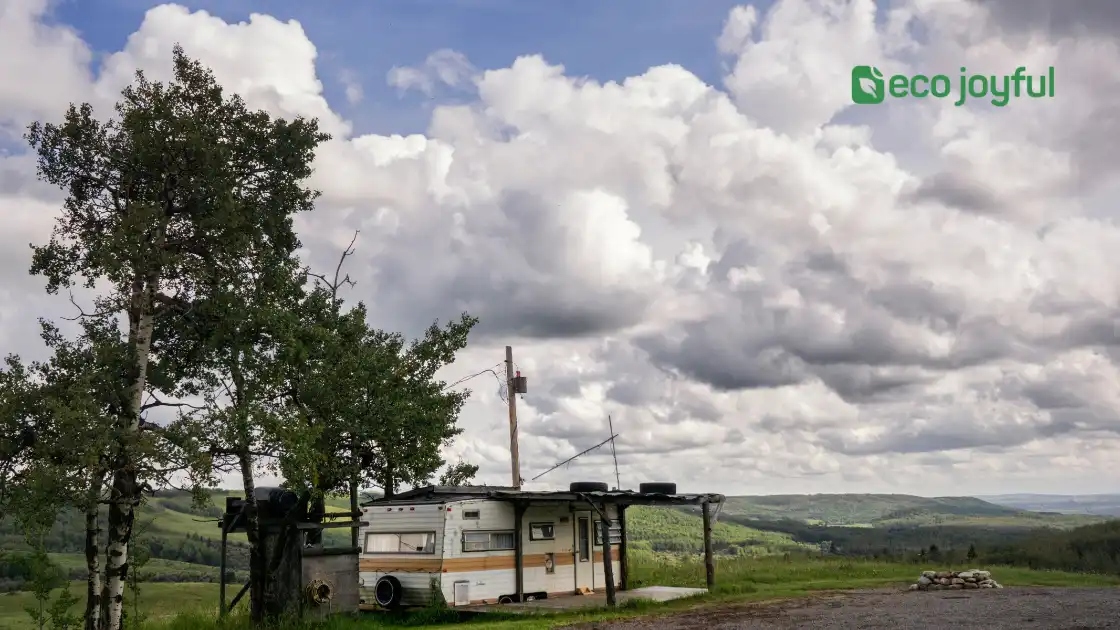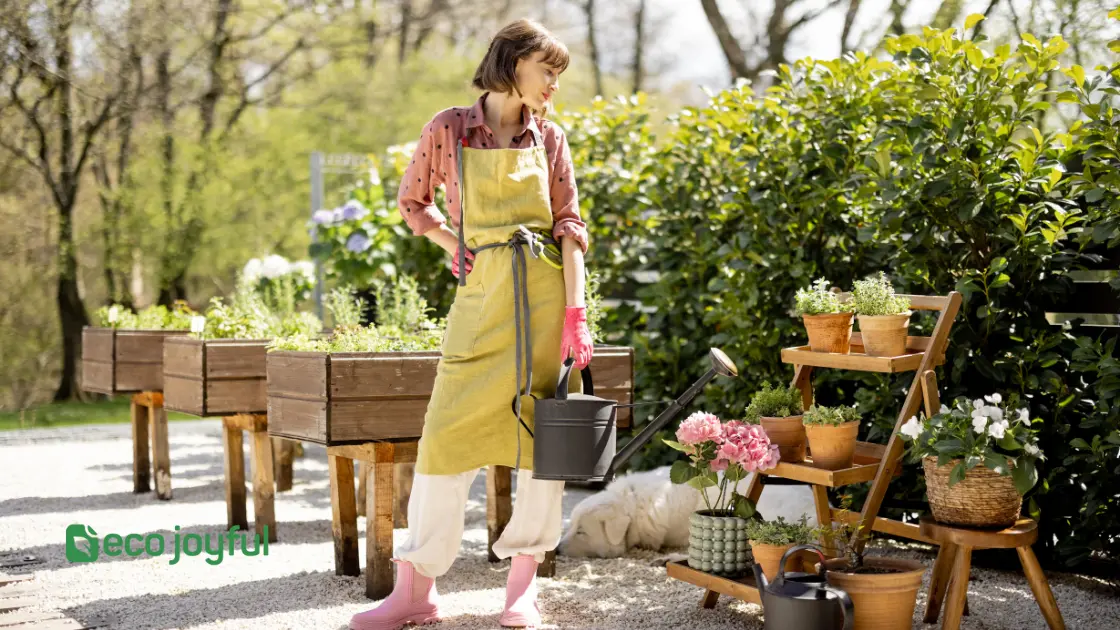To live sustainably at home, adopt eco-friendly practices such as reducing energy consumption and waste generation. In today’s world, it is increasingly important to live a sustainable lifestyle to protect our planet.
One significant step toward sustainability starts at home. By implementing eco-friendly practices, we can reduce our energy consumption, limit waste generation, and contribute to a healthier environment. Living sustainably not only benefits the planet but also allows us to save on utility bills and improve our overall well-being.
Table of Contents
How to Live Sustainably at Home
We will explore various ways to live sustainably at home, providing actionable tips and advice that can easily be incorporated into our daily lives. Let’s turn our homes into eco-friendly havens and make a positive impact on the world around us.

Reducing Energy Consumption
Reducing energy consumption is a crucial step towards living sustainably at home. By making simple changes in your daily habits and investing in energy-efficient solutions, you can significantly reduce your carbon footprint and contribute to a more sustainable future.
Switch To Renewable Energy Sources
Switching to renewable energy is one of the most impactful ways to reduce your household’s carbon footprint. By using clean energy sources such as solar or wind power, you can eliminate your dependence on fossil fuels and reduce greenhouse gas emissions.
Improve Insulation In Your Home
Improving the insulation in your home is an effective way to reduce energy waste and create a more comfortable living environment. By properly insulating your walls, windows, and attic, you can prevent heat from escaping during winter and keep your home cool during summer, reducing the need for excessive heating or air conditioning.
Use Energy-efficient Appliances
Investing in energy-efficient appliances is a wise decision to save both energy and money in the long run. When purchasing new appliances for your home, look for the ENERGY STAR label, which indicates that the product meets specific energy efficiency criteria. Energy-efficient appliances consume less electricity without compromising on performance, resulting in lower energy bills and reduced environmental impact.
By implementing these simple strategies, you can make a significant impact on reducing your energy consumption and supporting a more sustainable planet. Start small, and remember that every effort counts in our collective journey towards a greener future.
Conserving Water
Discover practical ways to conserve water and live sustainably at home. Learn simple tips and habits to minimize water usage, from fixing leaks to using efficient appliances, and contribute to a more eco-friendly lifestyle.
Fix Leaks And Drips
One of the easiest ways to conserve water at home is to fix any leaks or drips in your plumbing. A small drip may not seem significant, but it can waste a surprising amount of water over time. By fixing leaks promptly, you can prevent thousands of gallons of water from going down the drain.
Install water-saving Fixtures
Another effective way to save water is to install water-saving fixtures in your home. These fixtures are designed to reduce the amount of water used without compromising functionality.
You can make a big difference in your water consumption by replacing your old showerheads, faucets, and toilets with water-saving options.
For example, low-flow showerheads can reduce water usage without sacrificing water pressure, and dual-flush toilets offer the flexibility to use less water for liquid waste.
Practice Mindful Water Usage
In addition to fixing leaks and installing water-saving fixtures, practicing mindful water usage can make a significant impact on conservation efforts. Small changes in every day habits can add up to substantial water savings. For instance, turn off the tap while brushing your teeth or scrubbing dishes, and only run your washing machine and dishwasher when they are full. These simple actions can help reduce water waste and contribute to a more sustainable lifestyle.
Minimizing Waste
Are you looking to live sustainably at home? Minimize waste by adopting simple practices like composting, recycling, and reducing single-use items. Make a positive impact on the environment today.
Living sustainably is all about minimizing waste in our everyday lives. By reducing, reusing, recycling, composting organic waste, and avoiding single-use plastics, we can make a significant impact on the environment. Let’s explore each of these strategies in detail:

Reduce, Reuse, And Recycle
Reducing waste is the first step towards a more sustainable lifestyle. We can do this by being mindful of our consumption habits and making conscious choices.
Avoid overbuying and try to use up what you already have before purchasing new items. Consider borrowing or renting items that are needed infrequently instead of buying them.
Reusing items is another effective way to minimize waste. Instead of throwing things away after a single use, explore creative ways to give them a second life. Repurpose jars and containers for storage, find new uses for old clothing or furniture, and donate unwanted items to others who may find value in them.
Recycling is an essential aspect of waste reduction. Separate recyclable materials such as paper, plastic, glass, and metal from your regular trash and ensure they are recycled properly. Research recycling facilities in your area and familiarize yourself with the guidelines they follow to maximize the effectiveness of your recycling efforts.
Compost Organic Waste
Composting is an excellent way to deal with organic waste and turn it into nutrient-rich soil for your plants. By composting food scraps, yard trimmings, and other organic materials, we can divert a significant amount of waste from landfills. Set up a compost bin or pile in your backyard and follow basic composting guidelines to create your natural fertilizer.
Avoid Single-use Plastics
Single-use plastics are a major contributor to environmental pollution. To reduce their impact, make a conscious effort to avoid using them in your daily life. Opt for reusable alternatives like stainless steel or glass water bottles, cloth shopping bags, and metal or bamboo utensils. Choose products with minimal plastic packaging and support businesses that prioritize sustainable packaging practices.
By taking these small yet impactful steps to minimize waste, we can contribute to a healthier planet for ourselves and future generations. Living sustainably at home is not only beneficial for the environment but can also save money and improve overall well-being.
Growing Your Own Food
Welcome to this blog post on how to live sustainably at home! In this section, we will discuss the benefits of growing your own food. By starting a vegetable garden, using natural pest control methods, and preserving excess produce, you can not only contribute towards a more sustainable lifestyle but also enjoy fresh and organic food right at your doorstep. Let’s dive in!
Start A Vegetable Garden
Starting a vegetable garden at home is a wonderful way to engage with nature and provide your family with fresh and nutritious produce. Whether you have a spacious backyard or a small balcony, there are various ways you can create your own vegetable garden.
If you have a backyard, designate a sunny spot and prepare the soil by removing any weeds and adding nutrient-rich compost. Consider the space available and choose the vegetables that thrive in your region’s climate. For example:
| Climate Type | Vegetables to Consider |
|---|---|
| Temperate | Tomatoes, lettuce, carrots, cucumbers |
| Tropical | Okra, eggplant, peppers, sweet potatoes |
| Arctic | Kale, spinach, radishes, peas |
If you have limited space, consider these space-saving options:
- Vertical gardens: Use trellises or hanging baskets to grow climbing plants like tomatoes or beans.
- Container gardens: Utilize pots, planters, or even recycled containers to grow herbs and small vegetables.
- Window boxes: Transform your windowsill into a mini-garden with herbs and compact plants.
Remember: Regularly water your plants, provide adequate sunlight, and protect them from pests to ensure healthy growth.
Use Natural Pest Control Methods
When it comes to maintaining a sustainable garden, it’s important to take a natural approach to pest control. Instead of resorting to harmful chemicals, opt for eco-friendly methods to protect your plants.
Here are some natural pest control techniques:
- Companion planting: Grow compatible plants together, such as marigolds to deter pests.
- Beneficial insects: Attract beneficial insects like ladybugs and lacewings that feed on garden pests.
- Organic sprays: Create homemade sprays using ingredients like garlic, neem oil, or soapy water to repel insects.
- Physical barriers: Install fences or netting to keep larger pests like rabbits or birds away from your garden.
By implementing these natural pest control methods, you can maintain a healthy garden ecosystem without harming the environment or compromising the quality of your produce.
Preserve And Store Excess Produce
When your vegetable garden starts thriving, you may find yourself with an abundance of produce. Don’t let it go to waste! Preserve and store the excess to enjoy homegrown flavors throughout the year.
Consider these preservation methods:
- Canning: Use glass jars and canning techniques to store fruits, vegetables, and sauces.
- Freezing: Blanch and freeze produce like berries, peas, or corn for later use.
- Drying: Dry herbs or fruits in the sun or using low heat in the oven to preserve their flavors.
- Fermenting: Experiment with lacto-fermentation to preserve vegetables and create delicious pickles or sauerkraut.
By preserving the excess produce from your garden, you can reduce waste and have a stock of nutritious food even during the off-season.
Supporting Sustainable Transportation
Support sustainable transportation by adopting environmentally friendly practices at home.
Consider using public transport, cycling, or walking for shorter distances, reducing your carbon footprint and contributing to a greener future.
Walk, Bike, Or Use Public Transportation
Supporting sustainable transportation is an essential aspect of living sustainably at home. Making eco-friendly choices in our daily commute not only reduces our carbon footprint but also promotes a healthier lifestyle.
By opting for alternatives to traditional vehicles, such as walking, biking, or using public transportation, you can contribute to a greener future.
Choose Fuel-efficient Vehicles
If you do require a personal vehicle, it’s crucial to select one that is fuel-efficient. Fuel-efficient vehicles consume less gas, reducing emissions and conserving energy. These types of vehicles often have advanced technology that maximizes fuel usage, making them a smart choice for sustainable transportation.
Carpool Or Share Rides
An excellent way to further support sustainable transportation is to carpool or share rides with friends, family, or coworkers. By sharing the journey, you can significantly decrease the number of vehicles on the road, reducing traffic congestion and emissions. This practice also provides a chance to socialize while contributing to a cleaner environment.
Conclusion
To sum it up, adopting sustainable practices at home is not only crucial for the environment but also for our own well-being. By making small changes, like conserving energy, reducing waste, and choosing eco-friendly products, we can make a big impact.
Remember, sustainability starts at home, and it’s up to each of us to play our part in creating a greener and more sustainable future. Together, we can make a difference.









